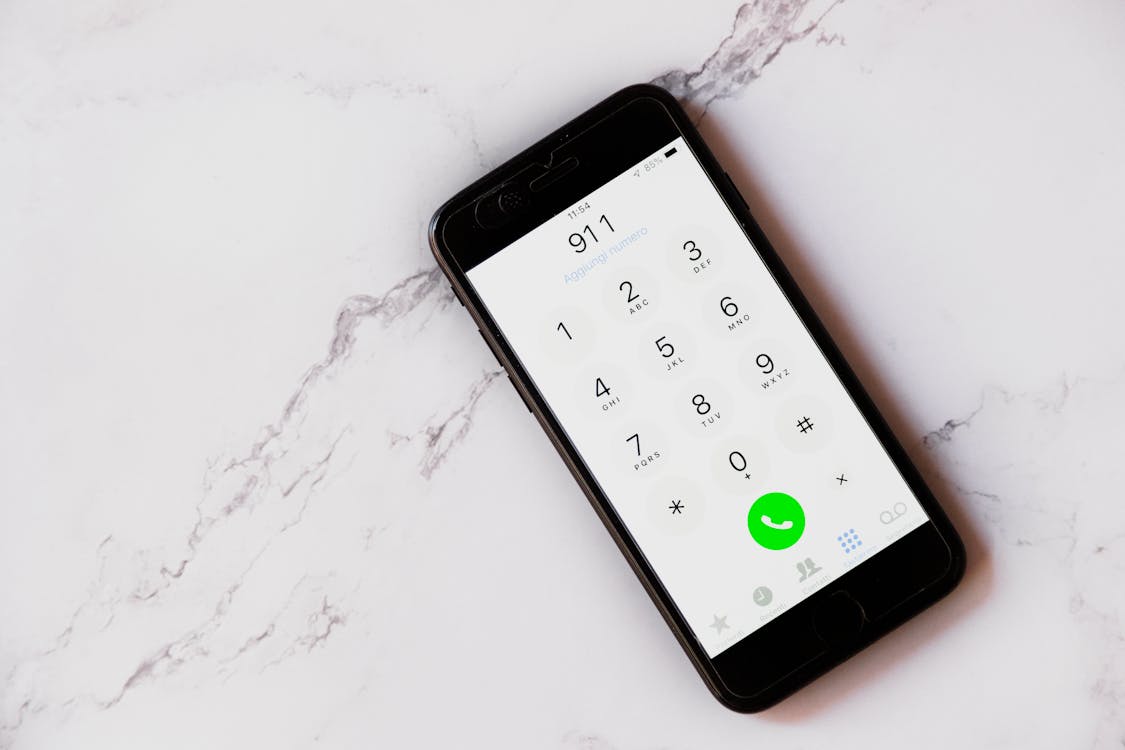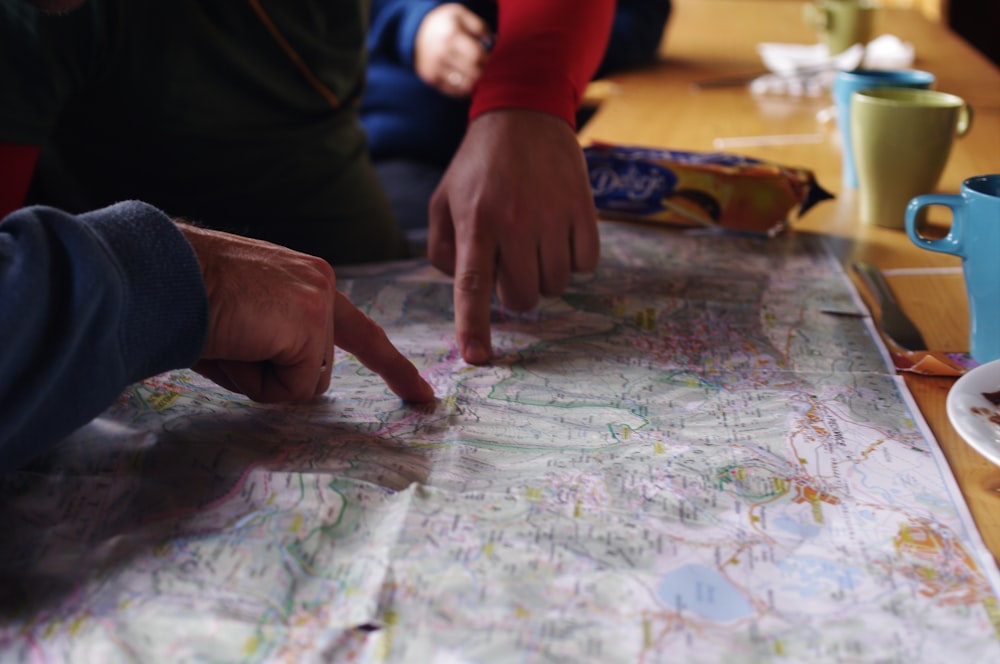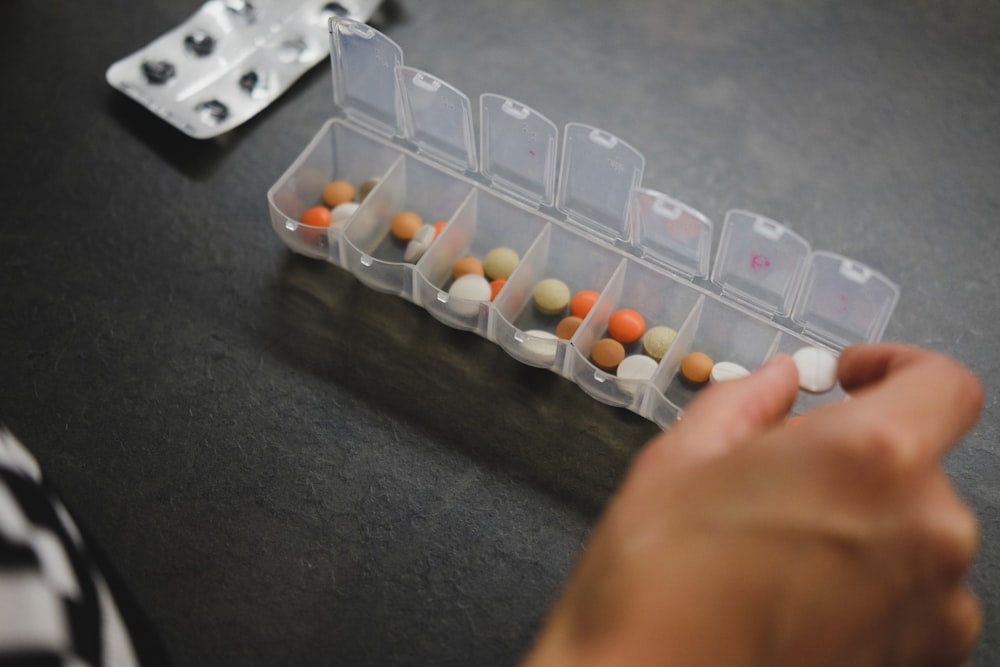What can we do today to prepare for an emergency? This is a question on many of our minds right now. Not only are we dealing with 5 times more natural disasters than we were 50 years ago, but increasing levels of political and social instability are shaking up daily life for countless individuals.

That's why it's important to prepare the members of our household for any disasters and emergencies that might come our way. Having vital supplies on hand and knowing what to do if an emergency occurs can make all the difference to our family's survival.
In this article, we present our top 7 emergency preparedness tips to ensure you and your family members have the supplies you need and know what to do if the time ever comes.

These are all measures you can implement TODAY, or at least set in motion, as part of your emergency preparedness checklist!
TIP 1: HAVE A BASIC EMERGENCY SUPPLIES KIT ON HAND
It's hard to predict what types of natural disasters will happen in our lives, though certain regions are more prone to specific scenarios. (We'll get into that later.)
It's also hard to anticipate what surrounding infrastructure will be damaged by violent natural forces. The water or electricity, for instance, could be out for hours, days, or even longer.
That's why it's vital to have a basic emergency supply kit on hand. Also known as a "disaster supplies kit," this contains the essential supplies members of your household will need for staying fed, watered, clean, and as informed as possible for several days if an emergency occurs.
The recommended emergency supplies include:
-
Water for drinking and sanitation (one gallon per person per day for several days)
-
Food (at least a 3-day supply of non-perishable items)
-
Battery-powered or hand crank radio and a NOAA Weather Radio with tone alert
-
Flashlight
-
First aid kit
-
Extra batteries
-
Whistle for signaling that aid is needed
-
Dust mask for help in filtering contaminated air
-
Plastic sheeting and duct tape for sheltering in place
-
Moist towelettes, garbage bags and plastic ties for personal sanitation
-
Wrench or pliers for turning off utilities
-
Manual can opener for opening food cans
-
Local maps
-
Cell phone with chargers and a backup battery
STORAGE CONTAINER(S)
Seal these supplies in airtight plastic bags.
Store the whole emergency supply kit in one or two containers that would be easy to carry if you needed to: plastic bins, duffel bags/backpacks, or the like.
MAINTENANCE
Maintaining the supplies in your emergency supply kit will ensure it's ready, adequately stocked, and effective when you need it.
-
Store canned food in a cool, dry, dark space. Avoid areas near furnaces or pipes, since these can cause fluctuating temperatures in their immediate vicinity. For this reason, also avoid storing emergency food in uninsulated attics.
-
Keep your boxed food in plastic or metal containers, and close them tightly.
-
Check the expiration date on emergency supplies at intervals. Replace anything that has reached its limit or is about to do so.
-
Re-assess your family's needs each year. For instance, if there's a new baby, add supplies accordingly and update frequently, as babies' nutritional needs change fast as they grow.
STORAGE LOCATION(S)

You could be anywhere when a disaster strikes, so make sure you prepare supplies for both your home, your workplace, and your car.
-
Home Kit: in a designated place that all family members know
-
Work Kit: enough supplies for 24 hours-- food, water, medicines, and good walking shoes
-
Car Kit: necessities plus one or two sleeping bags
PRE-MADE SURVIVAL KITS: A HELPFUL OPTION
If you're feeling overwhelmed at the idea of gathering all these basic supplies piecemeal, check out our collection of survival kits and associated gear.
A pre-made emergency kit like the ReadyWise Emergency Survival Start Kit above can simplify the gathering process when you're trying to collect your basic resources and items.
There are also a number of medical supplies and first aid kits available on the market that can help you tailor your family's emergency supply kit or go bag to your specific needs.
EMERGENCY GO BAGS--A PORTABLE CONSIDERATION
An emergency go bag is similar to an emergency preparedness kit except that you pack a go bag specifically for cases where you must get out. Because they're for situations when you're on foot or in your vehicle, they're a bit more minimalist than an emergency supply kit.
WHAT YOU CAN DO TODAY TO START YOUR EMERGENCY KIT
-
Talk to your family about emergency preparedness.
-
Start collecting the items and putting them in plastic bags.
-
Order any items you don't have on hand.
-
If you've already got a first aid kit, check the expiration or discard-by dates on its medical supplies and drugs.
TIP 2: DON'T FORGET INDIVIDUAL NEEDS WHEN PREPARING FOR EMERGENCIES
That list of basics in Tip 1 really is just the bare essentials--food, water, communication, first aid.
There may be other items that specific members of your family would be in trouble without, so it's important to consider these in advance.
These might be items like:
-
Prescription glasses or contact lenses and solution: Consider storing an extra pair of specs or an extra pack of lenses with solution in your emergency kit.
Check the expiration date on the solution every so often, and don't be tempted to hang onto contact lenses or solution beyond their discard dates. Saline solution starts to deteriorate with time, even if you never opened it.
The same goes for the solution in an unopened blister pack of lenses.
Time alone can also compromise the integrity of blister packs, letting contaminants in, so just don't even risk it.
The last thing you need during a disaster is an eye infection.
-
Prescription medications: It can be very hard (if not impossible) to refill a prescription during disasters and emergencies. Keep your "scripts" and any other necessary medications organized in a way that you could just grab them fast and go if you needed to evacuate.
-
Over-the-counter drugs: Does anyone in your family suffer from debilitating headaches, allergies, cramps, or intestinal issues? Prep for it. Include items like anti-diarrheal meds, pain relievers, etc.
-
Feminine supplies and personal hygiene items: Any members of your family who use these items regularly might require them during an emergency. Having personal hygiene items on hand can prevent extreme discomfort, if not infection, so stock accordingly.
-
Coloring book and crayons: Those of you with children know that little ones need the promise of mental stimulation, especially if your family is in a situation where you have to hunker down and wait days for news/rescue.
-
Sleeping bags: These could be important for anyone in your household if a disaster occurs during the cold months.
WHAT YOU CAN DO TODAY TO PREP FOR INDIVIDUAL NEEDS
-
Organize prescription meds so they'd be easy to grab in an emergency.
-
Start considering any personalized needs your family members might have.
TIP 3: DON'T FORGET IMPORTANT RECORDS, EITHER

Store important family documents like insurance policies, ID, and bank account records in either digital format or as papers in a waterproof, portable container.
While they're not necessary to survival like food and water, losing important family documents in a fire, flood, or other disaster can make a traumatizing experience even harder.
Replacing them can take time, effort, and energy that may not be at your disposal when you're still reeling from the aftermath of a disaster.
Worse, this is a time when you'll likely need these records more than ever for insurance claim forms or loan applications.
WHAT YOU CAN DO TODAY TO GET YOUR RECORDS TOGETHER
-
Compile a master list of all your account numbers, including a contact phone number for each one.

-
Get or find copies of documents showing the purchase of your home and any expense records for renovations, remodels, or other improvements you've done.
-
Copy records of investments you've purchased independent of your broker, including U.S. savings bonds.
TIP 4: CREATE A FAMILY EMERGENCY COMMUNICATION PLAN
Emergency preparedness isn't only about gathering essential basic items; it's also about your family having a plan of action in case a disaster occurs when you're not together.
How would you reach each other? Where would you meet up?
To help families address these questions, FEMA has developed the Family Emergency Communication Plan.
There are three stages to the plan:
1. COLLECTING INFORMATION
The first step involves collecting the following details:
-
Contact information: Create a sheet with emergency contact information (name and number) for every member of your household.
Also get the name and number of an out-of-town contact. This person would be a central point of contact who could help your family reconnect if you're unable to find each other in your local area.
-
Emergency plans at school/childcare, workplace, and caregivers: Be aware of the emergency plans of these common places where your family members may be when a disaster strikes.
-
Emergency meeting places: Choose three places your family will either go to for safety or to meet up with each other.
For protection at home during tornadoes or hurricanes, delegate a small, interior room like a closet.
If your family needs to leave the house due to an emergency like a fire, delegate a familiar spot in the neighborhood as a rendezvous point--a bench at the end of the street, for instance.

If a disaster happens when you're all away from home and cannot get back there, choose a spot outside the neighborhood as your meet-up point.
This should be a well-known, accessible spot like the local library or the home of a family friend.
2. SHARING INFORMATION
Once you've got all your information gathered, make sure all members of the household have a way to access it.
This means everyone has a cellphone with all emergency contact info saved on it. This goes for children, too.
Also ensure each phone has at least one name and number saved as "In Case of Emergency" or "ICE," in case a third party needs to make the call.
3. PRACTICING
Practicing your plan is the best way to avoid surprises, snags, or extra worries in the event of a real emergency.
There are a number of ways to practice. It could be as simple as having regular discussions with your family about details of the plan to make sure everyone remembers the vital information.
You could also do a physical run-through of the plan, having everyone gather at your neighborhood meeting place, for instance.
Either way, FEMA recommends you review, update, and practice your plan once yearly at the very least.
WHAT YOU CAN DO TODAY TO START YOUR FAMILY'S COMMUNICATION PLAN
This one's simple. Start collecting that contact information!
OTHER DISASTER COMMUNICATION TIPS

Mobile service can go down during disasters, and it might be hours or even days before it's back up. Even if service is available, it may not be possible to charge your phone.
So as you prepare for emergencies with your loved ones, make sure they're all aware of the following tips:
-
During an emergency, texting is best. Even if a call can't get through, a text message has more of a chance to do so since it uses less bandwidth than a phone call.
-
Check that everyone in the house knows how to save cellphone battery. Lower the screen's brightness, put the phone in Airplane Mode, and close any unused apps. (If you use more than than browser, check both!)
-
Social media networks like Facebook or Twitter are good for sharing information rapidly to a wide audience, which can be life-saving during a disaster.
-
Try a pay phone if you're having trouble getting through with a cellphone. Pay phones don't use mobile or electricity networks.
TIP 5: UNDERSTAND YOUR AREA'S MAIN DISASTER RISKS
PACIFIC WEST (INCLUDING ALASKA AND HAWAII)

-
Earthquakes
-
Wildfires
-
Hurricanes (Hawaii)
-
Tsunamis
-
Volcanoes
-
Landslides
WEST - MOUNTAINS
-
Earthquakes
-
Wildfires
-
Winter storms
SOUTH AND SOUTHEAST

-
Tornadoes
-
Landslides (Kentucky, West Virginia, and Virginia)
-
Earthquakes (Oklahoma, Arkansas, Kentucky, Tennessee, South Carolina, Mississippi, Louisiana, and Missouri)
-
Hurricanes
MIDWEST
-
Tornadoes
-
Earthquakes
-
Wildfires

MID-ATLANTIC AND NEW ENGLAND
-
Hurricanes
-
Winter storms
WHAT YOU CAN DO TODAY TO PREPARE FOR YOUR AREA'S HIGHEST RISKS
-
Earthquakes: Practice STOP, DROP, and HOLD ON
-
Tornadoes: Designate a small windowless room in the center of your house as a tornado shelter. If a basement is available, all the better.
-
Hurricanes: Think about an evacuation plan for your household and review (or start assembling) an emergency supplies kit of recommended items (resources, food, etc.)
-
Winter storms: Make an emergency supplies kit for your car with basic items AND jumper cables, sand, and blankets.
-
Landslides: Start Tip 1's emergency kit and Tip 4's communication plan.
-
Wildfires: Get connected. Sign up for local emergency alerts and learn about alerts that don't require sign-ups.
-
Volcanoes: Get dust masks and goggles. Make or discuss your evacuation plan.
-
Tsunamis: Discuss the warning signs and plan or review your evacuation routes.
TIP 6: KNOW HOW TO RESPOND TO AN ACTIVE SHOOTER
Not all disasters are natural. Some, unfortunately, come from the deliberate actions of others. Out of all the disasters mentioned in this article, these are perhaps the hardest to predict.
While you shouldn't live in constant fear, you still should know what to do if you encounter a live active shooter so that you can plan, prepare, and protect yourself.
WHAT YOU CAN DO TODAY
-
Review what to do in an active shooter situation and talk about it with your children.
-
Consider getting body armor. There's a wide variety out there, including bulletproof backpacks and clothing.

TIP 7: KNOW YOUR TOILET PAPER ALTERNATIVES
Toilet paper is one commodity not usually mentioned on an official emergency preparedness checklist, but it's a resource many people run to buy when there's news of a possible disaster.
Survival experts have all kinds of ways to handle a toilet paperless situation, from leaves to rocks to moss.
Here are some at-home alternatives:
-
Flushable wipes
-
Tissues (like Kleenex)
-
Bucket of water with a scoop (called a "tabo" in the Philippines)
-
News or magazine paper
WHAT YOU CAN DO TODAY
Honestly, unless you're running out of TP right now, you're probably okay and can sit tight on this one. Shortage issues mostly arise from people stockpiling toilet paper, not because disasters inherently cause us to need more of the stuff.
It's not bad an idea to look into a bidet, though. They're pretty awesome.
KEY TAKEAWAYS

An emergency preparedness checklist ensures you're ready with the supplies necessary for your family members' health and survival if disaster strikes, whether you have to shelter at home or elsewhere.
If you feel overwhelmed at the idea of gathering all those supplies, remember that pre-made emergency and food kits can help your preparation.
But being ready for an emergency means you not only have an emergency kit stocked with the recommended resources like food, water, and a first aid kit, but also that you and your loved ones know where to go and how to communicate during a disaster.
Do this by having a family emergency communication plan in place and practicing it.
Do you have an emergency kit? Tell us about it below! And do tell: what's the best emergency food you've ever tried?




